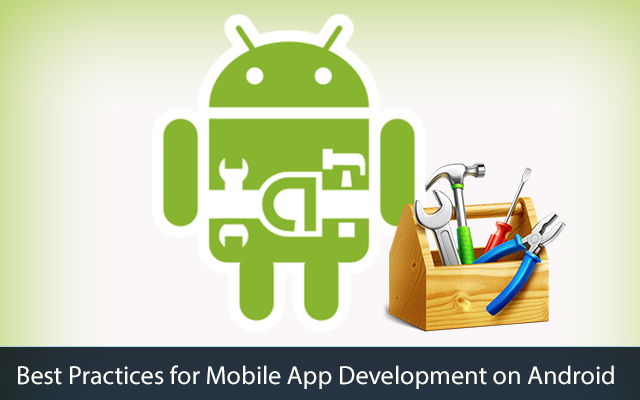Top Best practices for Android App development

Mobile application development has become the talk of the day and almost every industry from retail or healthcare to finance or utility, are focusing their attention towards this domain. In the present scenario, Android OS is driving this industry owing to its huge user base. Going by Gartner, 56.1% of the Smartphone user base worldwide has turned to Android.
App development is not solely confined to coding, design and development, followed by distribution in various downloading destinations. The manner in which the product is described in the downloading centre is also a vital part of its lifecycle. For instance, Android apps listed in Google Play Store can be downloaded at a certain price or for free. Prior to putting them in the Play Store there are certain best practices that should be considered to ensure that your app fulfills the required technicalities and performs well.
-
Make a wise choice between mobile website and native mobile app: If you are inclined to ensure a mobile presence for your organization or business, you must consider whether a native mobile app or a mobile website is apt for your business. It is good for you to understand what suits your requirement, available budget and target audience. A native mobile app can be directly installed within the device which the users can purchase through marketplace or online store. The cost is more and when the development is for multiple platforms, multiple code bases need to be maintained which leads to higher development and maintenance costs. On the other hand, a mobile website incorporates browser-oriented HTML pages which are less costly, can be conveniently made available, easily upgraded and shared. If you are looking forward to develop mobile friendly content to reach out to the maximum number of audience, then mobile website is the best choice. Apps are good options in case your target audience is going to utilize the same in a personalized way. If there is no budgetary constraint, you can develop both the versions considering all possible business scenarios.
-
Consider the real life scenarios: It is always good to take into consideration the real life scenarios wherein Android users will find the app useful along with its actual utilization. For instance, if you happen to run a security agency it is wise to develop an Android app which can help users in distressful times by acting as an emergency alarm system. Moreover it should be clearly mentioned whether the product is able to work offline or can only work when linked to the internet.
-
Specify the device compatibility factor: It is a very bad situation when the users download the app thinking of utilizing the capabilities but are ultimately unable to do so owing to the app’s incompatibility with his device or its technical aspects. The compatibility guidelines should be clearly mentioned in the technical specifications. It would be helpful for the users to conveniently identify whether the same will work on their Tablet PCs, Smartphones or any other mobile device.
-
Specify the best view of the app: The screen sizes of different Android devices vary, and so does the resolution. This must be clearly stated in the technical specifications, because although two phones might have similar metal within, the screen size may vary leading to diverse views of a single app. You must convey the minimum resolution and screen size required to view the app in the most convenient angle.
-
Take care of the security factor: A number of users have the feeling that so far as the security factor is concerned, Android is unreliable. Hence as a developer, you must always ensure that the security aspects of the app are highlighted. This is all the more important when you are launching apps which deal with financial information or security.
-
Focus on the accessibility : This is of immense significance if you want to reach out to a wider user base. Once the usage is mentioned, ensure that the functionality is completely achieved after the user downloads the application and begins to use it.
-
Go for rigorous performance testing: Before rolling out the app, subject it to rigorous testing. This is vital because it helps you eliminate any sort of irregularities before the app reaches the end-users. Ensure that the end product meets adequate quality guidelines. This is only possible if you have a qualified testing team.
Following these best practices will definitely help you release a well performing app in the market. Remember that every app you release is the outcome of hard work and continuous effort, hence it should never be allowed to go waste. You can hire developers from top mobile app development companies in india who can help you build mobile apps within allocated budgets and time schedules.
We provide android app development services. If you would like to hire android developers from our team, please contact us at Mindfire Solutions.
